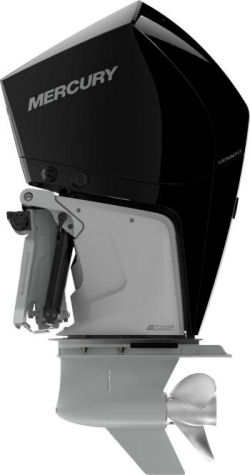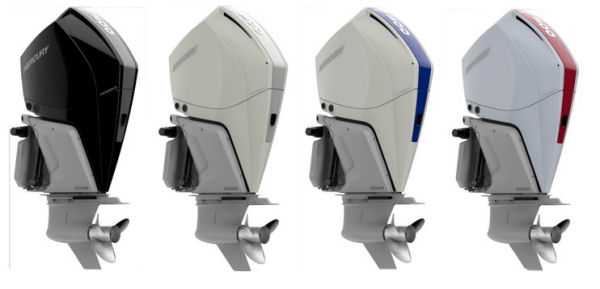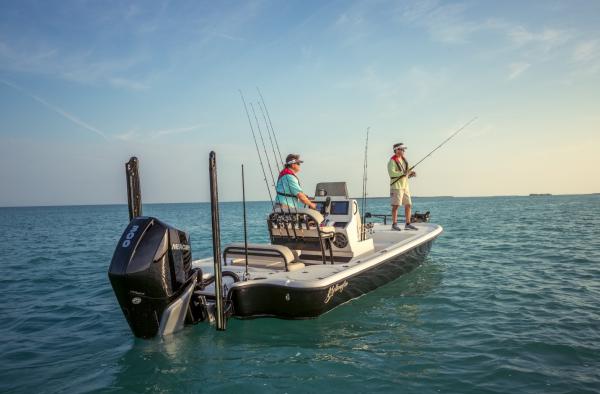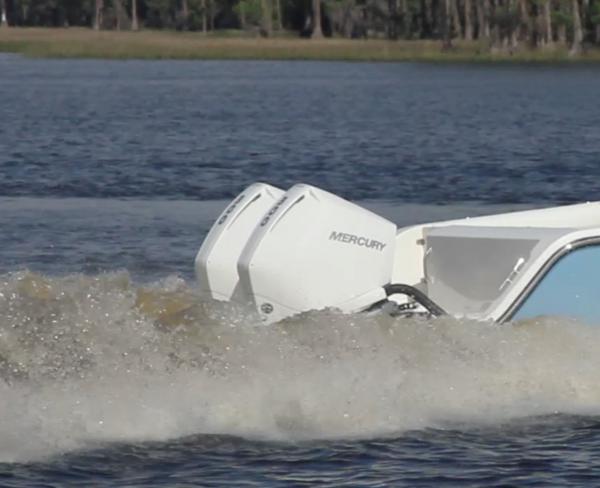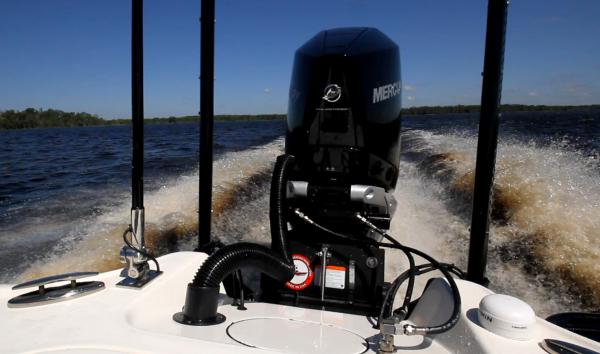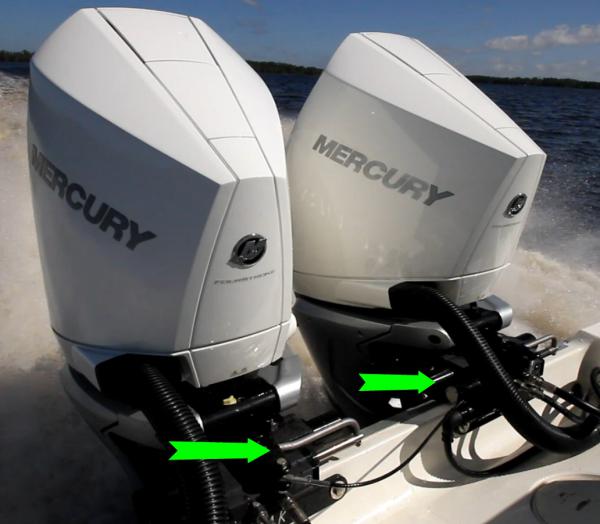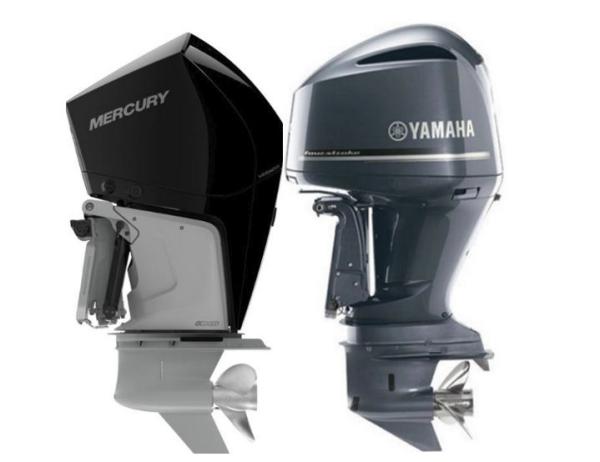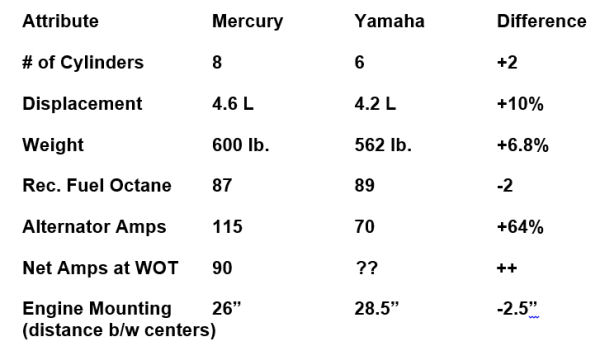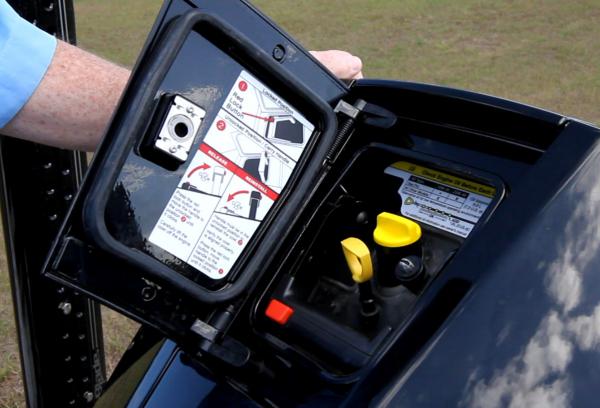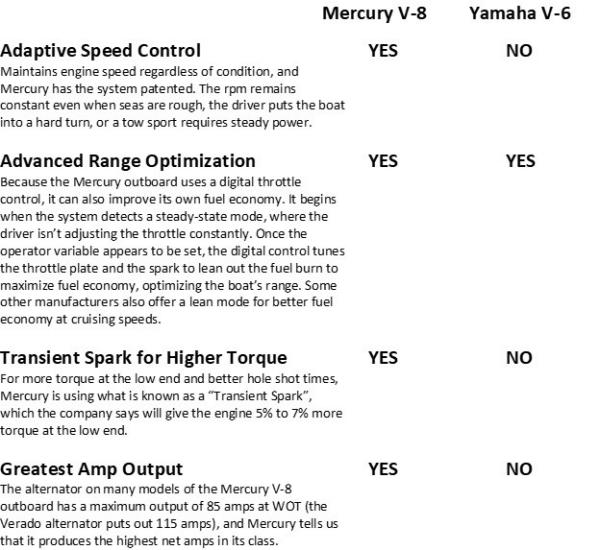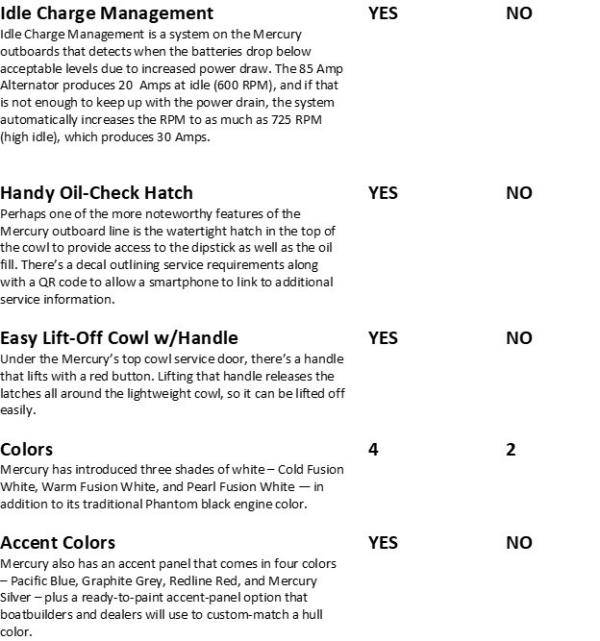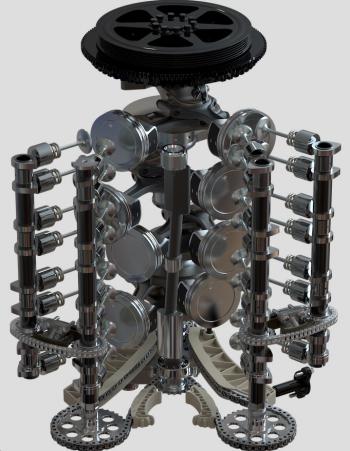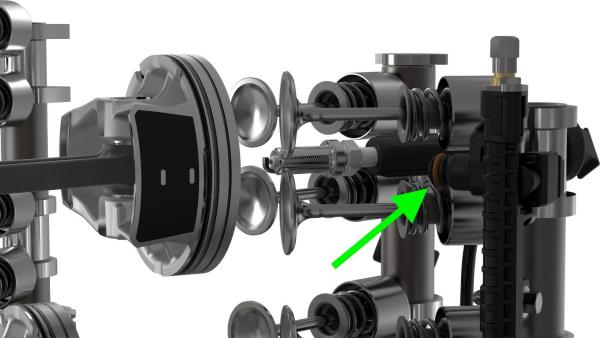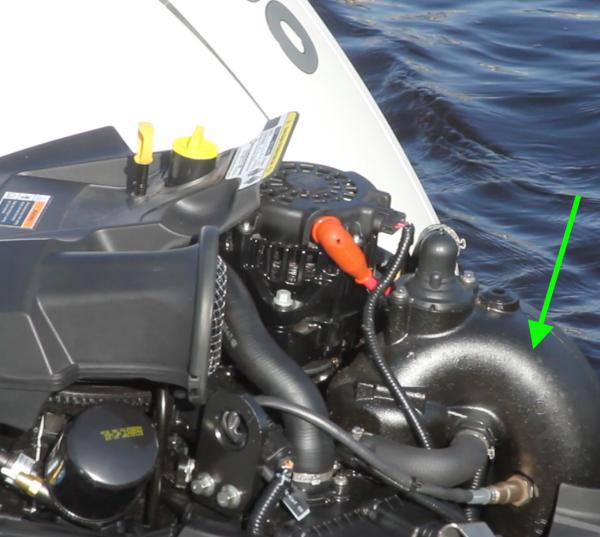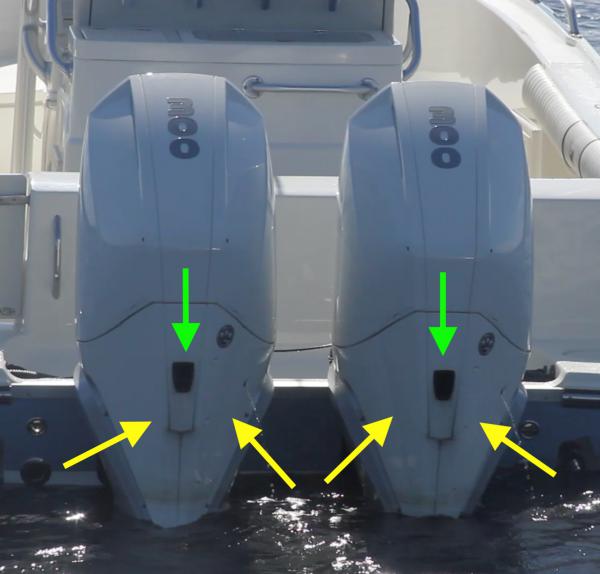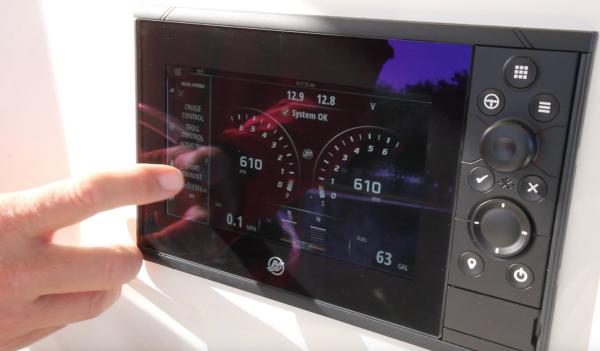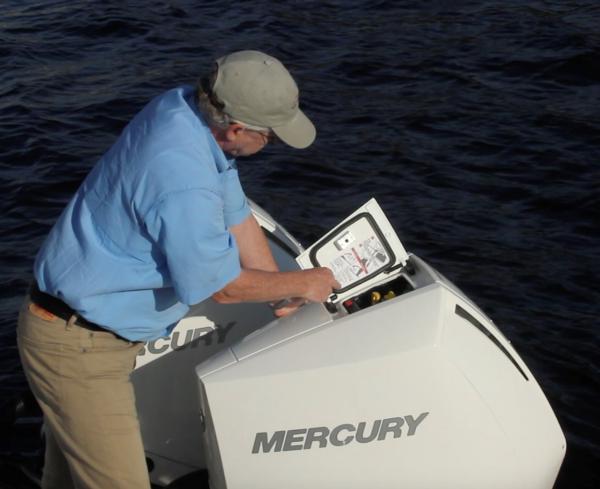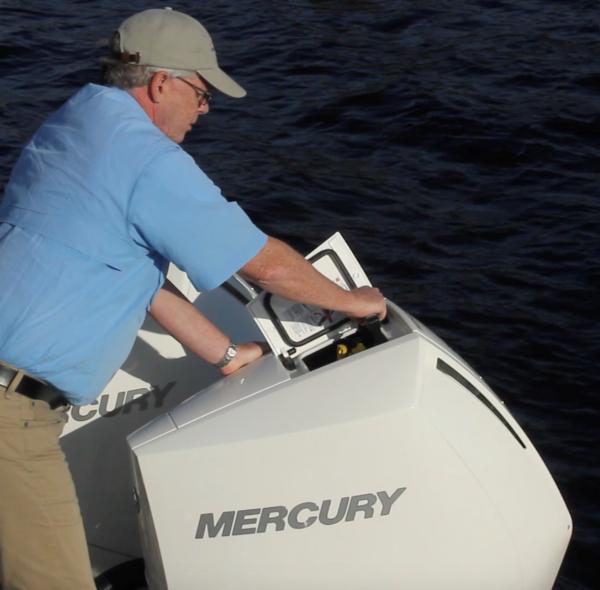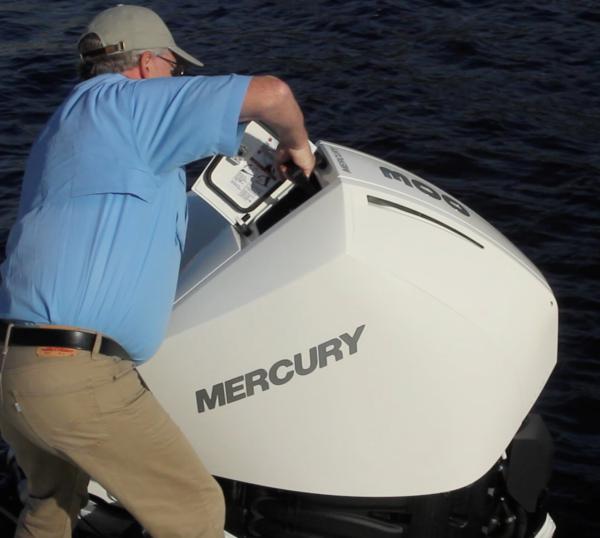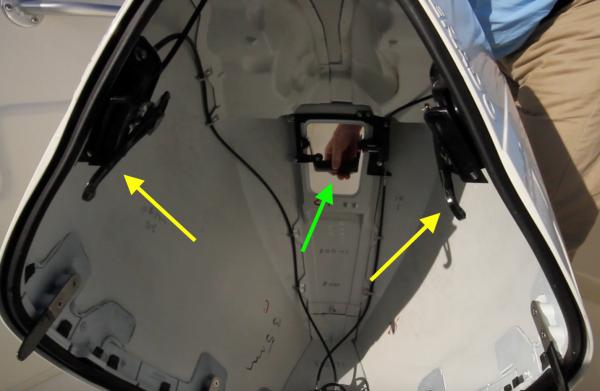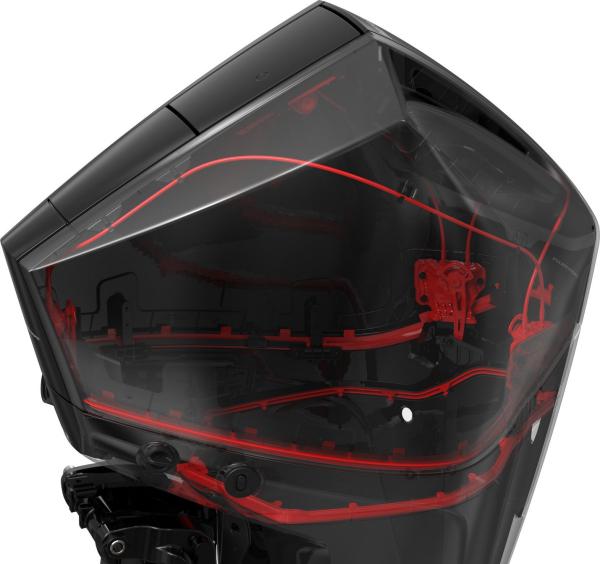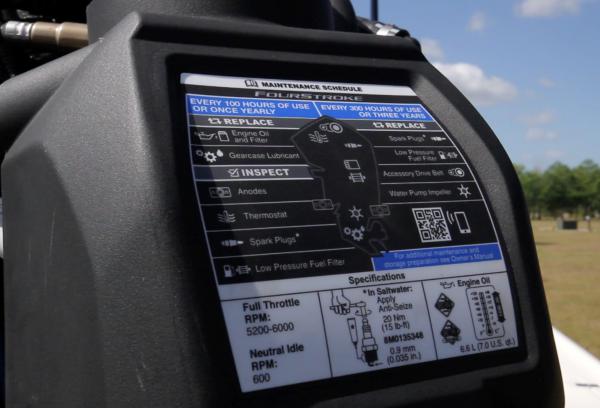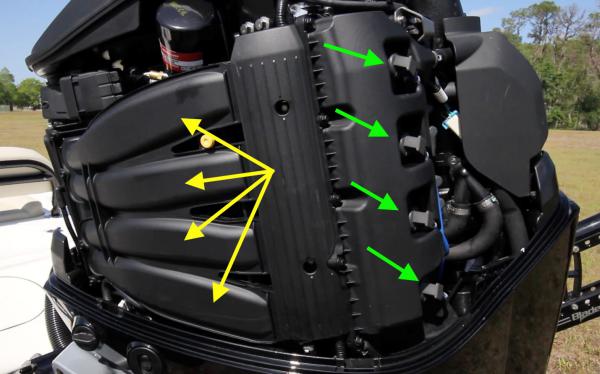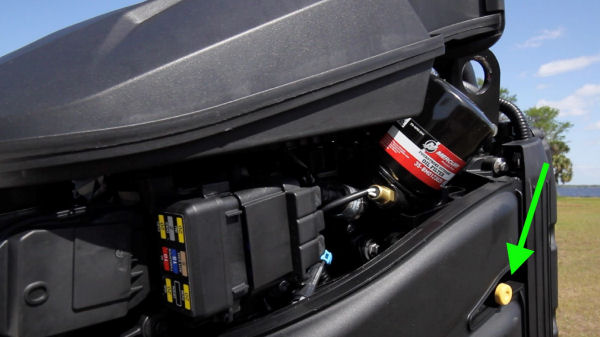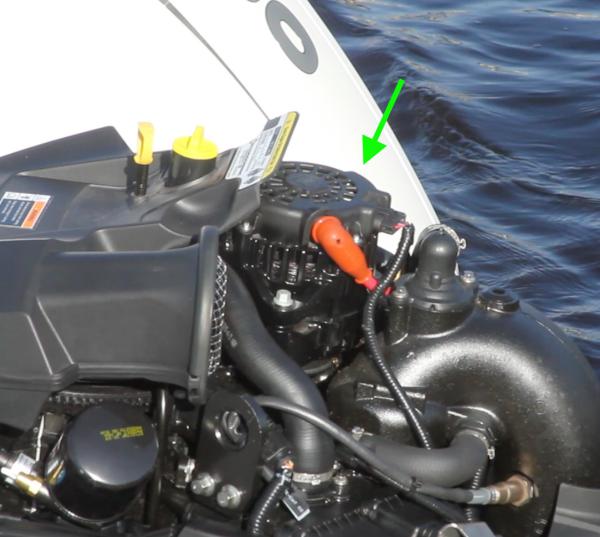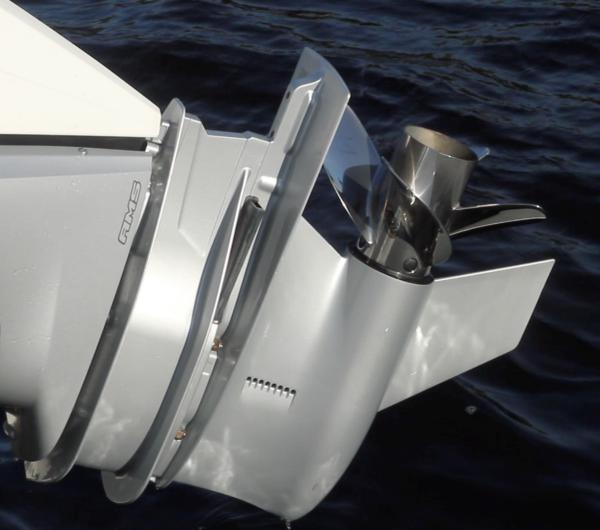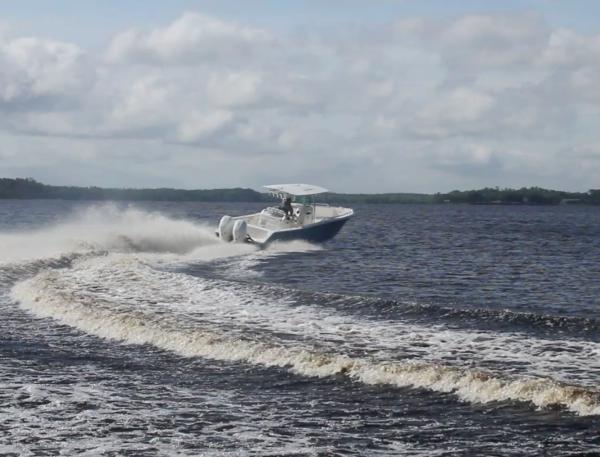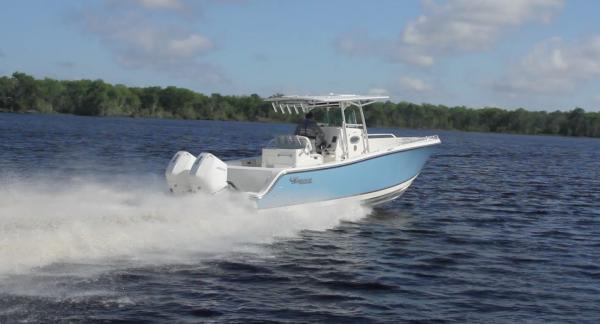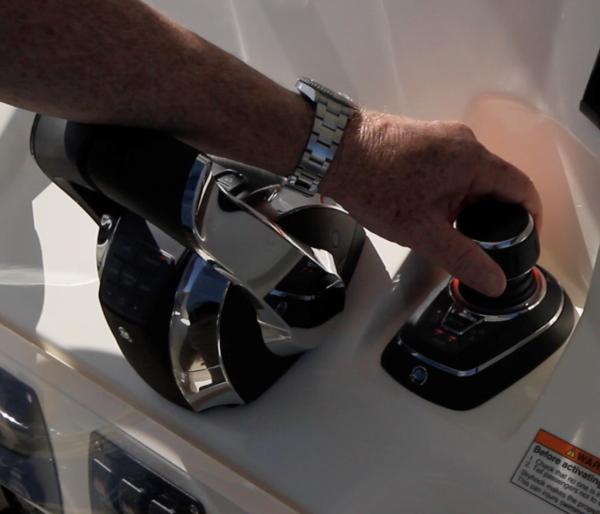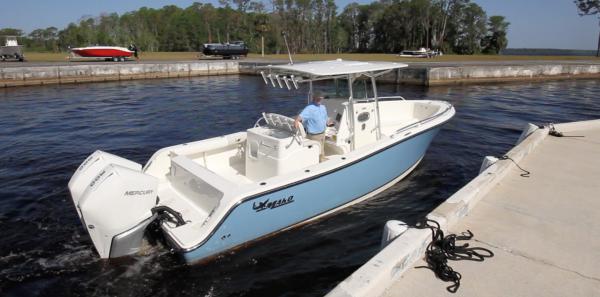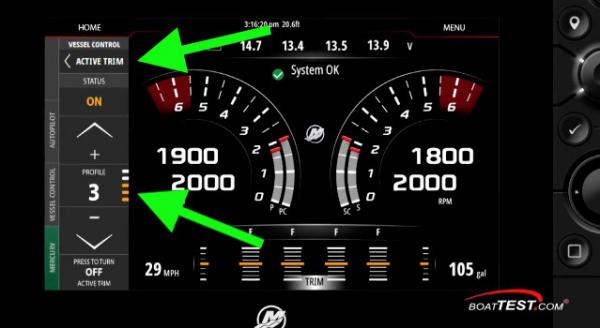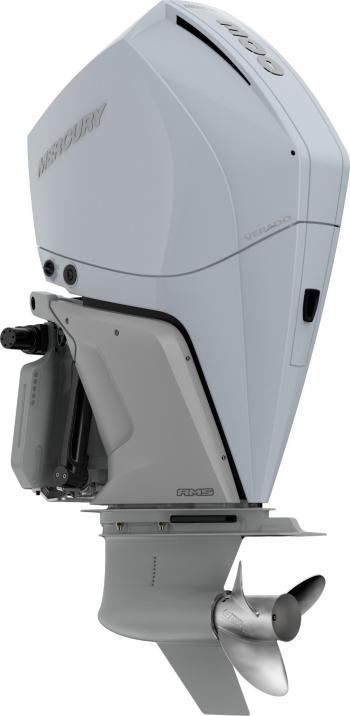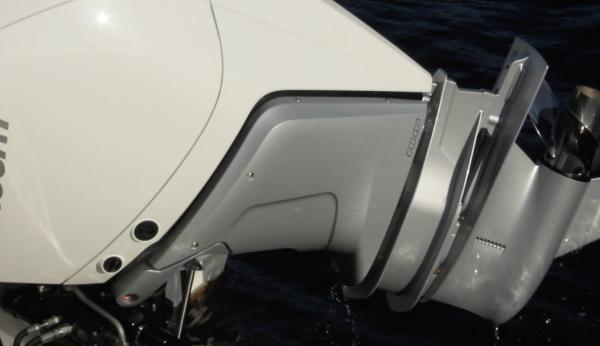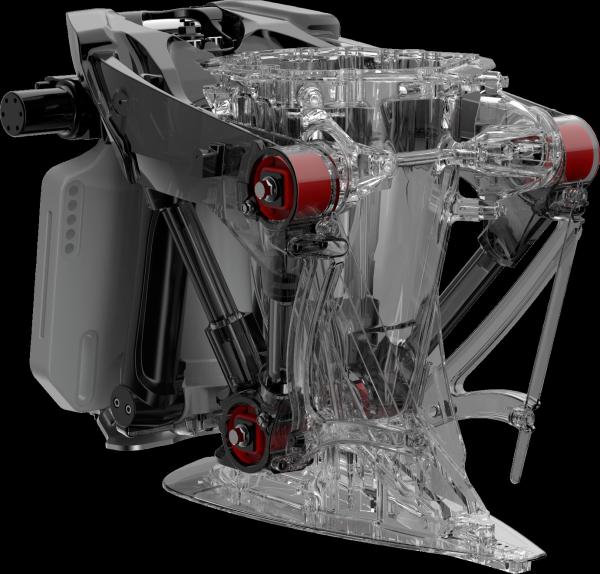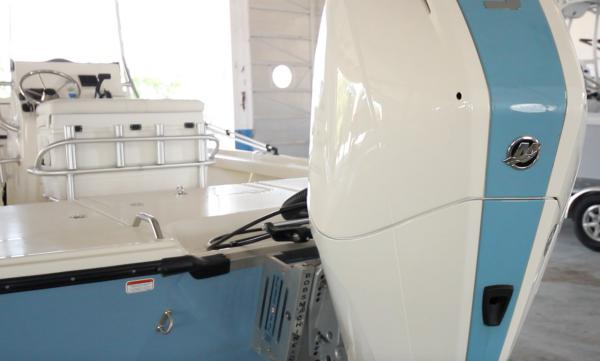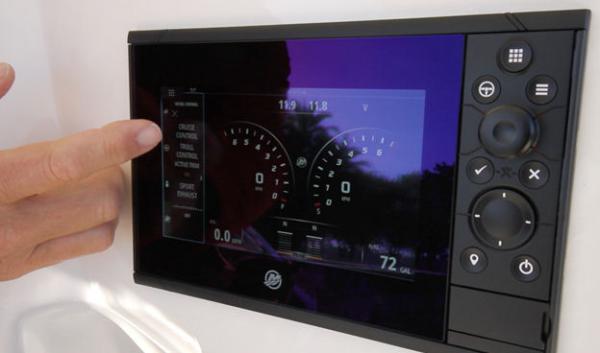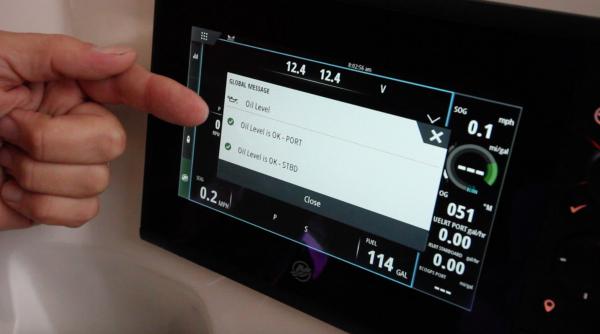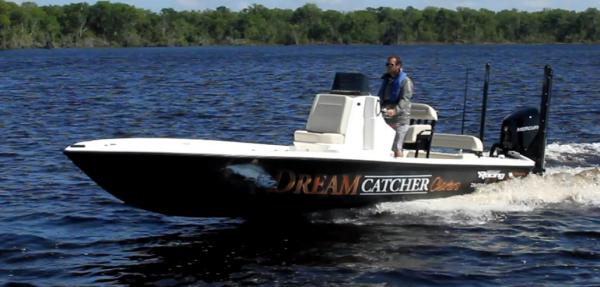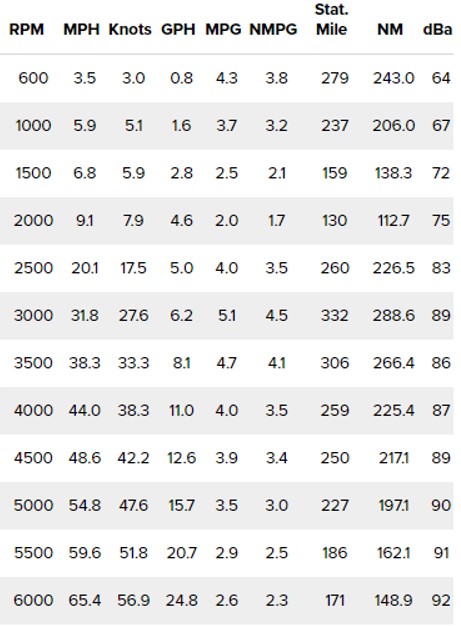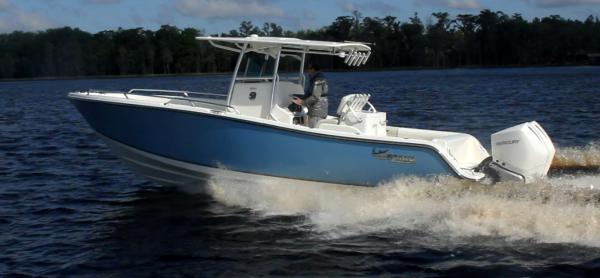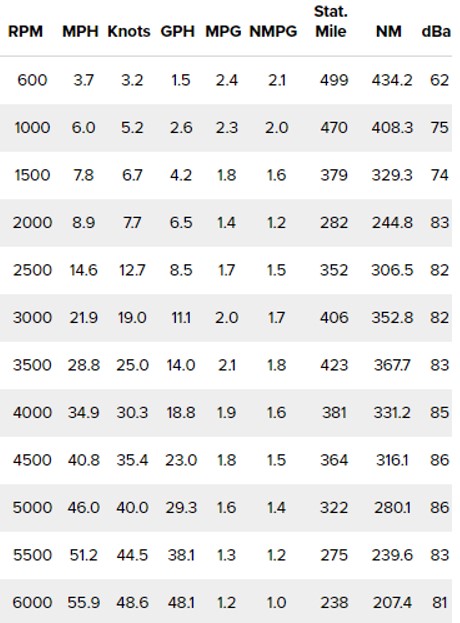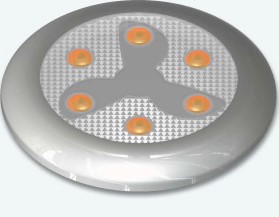Brief Summary
In May 2018, Mercury Marine announced the introduction of an all new 4.6L V-8 platform, and the premium series based on that platform is the Verado. Unlike the 2.6L Verado engines that it replaces, this series does not have a supercharger.
Key Features
- Highest displacement in its class
- 8 cylinders, DOHC
- Advanced MidSection for reduced vibration
- Digital Throttle and Shift (DTS)
- Available with joystick
- 115 Amp alternator
- Idle charge battery management
- Transient Spark Calibration for more torque
- Adaptive speed control
- Advanced range optimization
- Handy oil check and fill
- Handle to easily remove the cowl
- Recommended 87 Octane fuel
Specifications
| Type of Engine | 4-Stroke |
|---|---|
| Number of Cylinders | 8 |
| Horse Power | 300 |
| Configuration | |
| Weight | 600.00lbs |
| Fuel Type | Gasoline |
| Fuel Delivery | |
| Shaft Length Options | 20", 25", 30" |
| Shift Throttle Control | |
| Displacement | 279.00cu in |
| Steering Control | |
| Recommended Fuel | 87 Octane |
| Alternator Output | 115 Amps total |
| CARB Rating | 3-Star |
| Engine Monitoring System |
Captain's Report
Overview
Mercury has introduced an all-new 4.6-liter (279 cubic inch) V8 engine. It’s 35 lbs. (16 kg) lighter -- 600 lb. (272 ks.) rather than 635 lbs. (288 kgs.) -- than the previous-generation Mercury Verado 300, which was an inline-6 configuration.
The company says the naturally aspirated Verado will provide smooth, quiet power and optimize fuel economy. The powerhead is a large-displacement designed for more power and greater low- and mid-range torque, and for better acceleration.
The new Verados are available in 250- and 300-horsepower ratings.
Mercury Verado: The Big Picture
The concept driving the new Verado Series is to offer a compelling amount of power by means of displacement, fuel injection, and electronic engine control, rather than by a supercharger, as was done in the inline-6 engine platform. The electronic system is used to dial in fuel efficiency. It does this by controlling the fuel-air mixture in a closed-loop fuel system.
For more torque at the low end and better hole-shot times, Mercury is using what is known as a “Transient Spark”, which the company says will give the engine 5% to 7% more torque at the low end.
The Verado takes its name from the famous L6 supercharged engine it replaces, but it is not supercharged and because of its large displacement, light weight and transient spark ignition, it doesn’t need to be. Nevertheless, it is Mercury’s premium engine of the four lines it offers – Verado, FourStroke, Pro XS, and SeaPro – and it has its own set of standard and optional features designed for its intended market.
Intended Applications
Offshore Saltwater Fishing Boats. It has been specifically designed for saltwater in single and multi-engine applications for center consoles, express fish boats, and express cruisers where consumers want lots of quiet power. Because of Mercury Marine’s proprietary aluminum alloy, all Mercury products are generally considered to have the best anti-corrosion system on the market – which makes its units compelling in saltwater applications.
Distinguishing Features
Most notable is the fact that it comes standard with the Advanced MidSection, a 5.4” gearcase, electro-hydraulic power steering and additional sound abatement in its cowl. It is also the only Mercury recreational engine that can use the Joystick Piloting system. It also is available with electrically actuated exhaust cut-outs for those who want a throaty sound.
The 5.4” gear hub comes standard on the Verado, and it has been proved over time to be reliable and able to stand up to the rigors of punishing offshore work at high speeds. The available joystick and the narrow profile of the Verado make it better adapted to multi-engine installation than wider engines.
More Electrical Power. Offshore fishing boats are notorious for having every electronic device known to man aboard to give anglers a fighting chance to land fish. That, together with other electrically driven equipment, such as livewells and fishbox refrigeration, requires lots of power. That is why the new Verados have as standard equipment 115 amp alternators. Further, is has a feature that automatically raises the idle to produce 30 amps if the batteries are low.
Electro-Hydraulic Steering
Only the Verado among the new outboard engines that Mercury has introduced as the “electro-hydraulic” steering system. This is part of the outboard engine and is not an aftermarket, vendor-supplied piece of equipment such as the SeaStar hydraulic steering system that we see on most outboard engines in class.
The advantages of this system are that it has been engineered by Mercury for this specific application and is not a one-design-fits-all piece of equipment. It is also made with Mercury’s corrosion-resistant materials, and is smaller than a SeaStar-type unit. Most important it integrates with the Mercury joystick and advantageous for multi-engine installations.
The Premium Engine. The Verado is also compatible with all of Mercury Marine’s electronic features such as active trim, Advanced Range Optimization, Adaptive Speed Control, and Sport Exhaust. This makes it the premier engine series on the four distinctive lines.
Yamaha Comparison
Mercury Marine has taken dead aim at Yamaha, which has dominated the saltwater market for the last two decades. By forging exclusive supply arrangements with builders of offshore fishing boats, and because of the brand’s reputation for reliability, this market has been tough to crack by Yamaha’s four competitors.
Virtually everything about the new Mercury has been to improve upon the Yamaha 250- to 300-horsepower engines for offshore work. Here is a list of comparative data points—
Standard Features to Aid Boat Operation
In addition to the basic design criteria mentioned above, Mercury Marine also has a host of electronic and design features, most of which Yamaha does not have.
Design Innovation
The Powerhead. Much of the innovative design of the 4.6-liter V8 Verado comes from the mandate for the new line: It had to be powerful, have high torque at the low end, be lightweight, quiet, and efficient. Consider that the 4.6-liter V8 is 2 liters greater than the supercharged 2.6-liter displacement of the inline-6 Mercury and yet it weighs 35 lbs. (16 kg) less. Displacement is one way to generate more torque in a 4-stroke engine, a job that the supercharger fulfilled in the L6 2.6L models. The double-overhead cam design, with four valves per cylinder, combines with an enlarged intake to deliver plenty of air and fuel when it’s needed.
The Fuel Injection System
The new Verados use two intake valves to charge each cylinder, with the injector for each cylinder positioned between them in the intake manifold. We asked Mercury why the injectors were placed in the manifolds instead of in the cylinders themselves. The answer--
“A port fuel injection (PFI) system has many advantages, chief among those being simplicity, reliability, and cost,” says Brian Meyer, category manager for 75+ hp outboards for Mercury Marine. “Direct injection (DI) systems certainly can improve fuel economy and performance of an engine. However, Mercury has chosen to address the performance needs of our customers by optimizing the displacement and efficiency of our PFI engine, while also employing our Advanced Range Optimization (ARO) technology. We believe that the ARO system yields comparable improvements in fuel economy to a DI fuel system at a significantly lower cost.”
Unusual Exhaust System
This is one of the most innovative aspects of the engine because it reduces the width of the engine, reduces its weight, and helps contain engine noise – all with one design. The exhaust manifold is in the middle of the V, instead of being on the outside. It is then routed from the top of the engine, down the centerline, between each side of the V of the engine. This allowed Mercury to keep the cowl width slimmer so that the outboard could be installed on 26” centers – 2.5” less than on the Yamaha V6.
The exhaust-system design uses a multi-chamber muffler system located beneath the “chaps,” as the manufacturer calls the panels on either side of the midsection. The muffler chambers connect the main exhaust passage to the idle relief port and include an electronically controlled bypass valve.
Sport Exhaust
Boating is meant to be fun, and sometimes boaters want to hear the throaty growl of a V8 (or two), letting everyone know they’re there. Mercury designed Verado to be exceptionally quiet, and never is that more apparent than when using a setting called Sport Exhaust. When it’s turned on, on the VesselView touchscreen, the system routes exhaust through the idle relief and one of the two mufflers.
Let’s Rumble. This creates an unmistakable throaty rumble that’s been tweaked to impress friends and neighbors and call attention to the new outboards – to say nothing of the boat’s proud owner. And when it is toggled off, the outboards sounded even quieter than we initially thought. It’s a system that Mercury says has never been offered on an outboard before.
Top Cowl Service Door
Perhaps one of the more noteworthy features on the Verado is the watertight hatch in the top of the cowl to provide access to the dipstick as well as the oil fill. There’s a decal outlining service requirements along with a QR code to allow a smartphone to link to additional service information.
Easy-Off Cowl
Under the top cowl service door, there’s a handle that lifts with a red button. Lifting that handle releases the latches all around the cowl, so it can be lifted off easily.
Ease of Maintenance
Once the cowl is removed, many service points are apparent. The oil filter is easy to spot near the fuse box on the port side. The spark plugs are arrayed in neat columns aft and the fuel filter is handy there as well, on the starboard side.
More “Net” Amps than Any Engine in Class
The Verado Series V8 has a 115-amp alternator as standard equipment. But the name of the game is “net amps” – the amps left over from the running of the engine to power onboard accessories, electronics, and to keep the batteries fully charged. At WOT these alternators produce 90 net amps, we’re told. At high cruising speeds they produce 65 net amps. These are high numbers and are important for owners of well-equipped boats, particularly the larger cruising boats that are now being fitted with outboard engines. But, that’s not all…
Idle Charge Battery Management
At idle, the alternator provides 20 “net” amps for the boat. Simply put, the engine-management system detects when the batteries drop below acceptable levels due to increased power draw.
Today’s boats have more electrical and electronic devices on board than ever before, and they all require a flow of clean juice to keep operating properly. Whether the onboard systems are charging trolling-motor batteries, keeping the sound system thumping, or running big-screen helm electronics, including a chart plotter, CHIRP sounder, and radar, the system increases idle rpm to boost alternator output, to help charge batteries to compensate for power draw.
It gently raises the idle level from 600 rpm to around 800, to get to the next level on the curve of the alternator, and in this mode, it delivers 30 amps of usable power to the house batteries. While the engine is revving slightly higher, it’s still at a speed where it’s able to shift.
Lower Unit Gears
The robust 5.4” gearcase is an evolution of the one that has been used on previous Verado models and has proven itself in tens of thousands of hours of rugged use over the last few years.
Adaptive Speed Control
This proprietary system maintains engine speed regardless of condition, and Mercury has the system patented. The idea is that the rpm remains constant even when seas are rough, the driver puts the boat into a hard turn, or a tow sport requires steady power. Adaptive Speed Control is a function of the ECU, where operator demand and engine load are measured and the electronic throttle position is adjusted. It is standard.
Advanced Range Optimization – Improves Fuel Efficiency
Because the Verado uses a digital throttle control, it can also improve its own fuel economy. It begins when the system detects a steady-state mode, where the driver isn’t adjusting the throttle constantly. Once the operator variable appears to be set, the digital control tunes the throttle plate and the spark to lean out the fuel burn to maximize fuel economy, optimizing the boat’s range.
Digital Control
The Verado is rigged, standard, with SmartCraft Digital Throttle and Shift (DTS), which gives the responsive control by wire. In multiple-outboard installations, Joystick Piloting for Outboards can be made part of the Verado package, offering simple fingertip control around the dock.
A Note About Active Trim
While expert drivers may sneer at the idea of the optional Active Trim, it has been shown to work in our testing, and can even offer something to those who may think their feel for boat trim is more effective than that of a computer: Active trim synchs up the trim of the engines, letting the expert trimmer tune the rig more effectively, rather than dealing with trim motors that adjust the engines at varying rates in a multiple-outboard installation.
Emissions
The Verado has received a three-star emission rating from CARB, and is compliant to the U.S. and E.U. regulations as well, all on one calibration.
Mercury Marine’s Corrosion-Resistant Aluminum Alloy
Historically, outboard engines in saltwater have suffered from corrosion. When electrons flow through dissimilar metals the weaker metal is eaten away or corrodes. Outboard engine blocks, cylinder heads, gear cases, driveshaft housings and swivel brackets are made out of an aluminum alloy by all manufacturers. But all aluminum alloys are not the same.
Low-Copper Alloy is Key. Mercury's die-cast components, are all made from XK360 aluminum-silicon alloy. The same goes for the new 4.6L block of this outboard platform, which is made with a high-pressure die-casting in a 4,500-ton press, which is among the largest in the world. This process shows significant investment by Mercury and contributes to the weight loss of the new engines.
Mercury is generally regarded to have the best corrosion-resistant alloy in the recreational marine industry.
Quiet Operation
The new V8 Verado has been designed to keep its noise to itself. The design starts blocking noise with the cowling – and the Verado has more sound abatement qualities than the other models, we’re told. The entire outboard is sealed to keep engine noise in. The engines all use an air intake that’s baffled to be quieter. Mercury has been using a variant of this design since it introduced the first generation Verado, and it works.
All of the lightweight parts used were designed to also keep sound in, including the plastic valve covers to mask the noise of the valves and injectors.
Another way to keep the outboard quiet is to engineer less internal friction into its design. Mercury says its engineers designed the oil-flow scheme and sized the bearings with this in mind.
Damping Vibration
Mercury looked closely at the mounting system on the mid-section of the outboard and calculated where the vibration comes from on the engine. Engineers determined the vectors of vibrational force, i.e., whether the vibration is moving fore and aft, or athwartships, or some angle in between. The engineers then designed the mounts to offset that vibration at a suitable angle. Because of this analysis, the mounts can be engineered to be firmer, rather than just softer to damp any vibration – and in this way they are also designed to maximize engine performance, says Mercury.
Advanced MidSection
The new Verado has what Mercury calls an Advanced MidSection (AMS). It is a step up from the Conventional MidSection (CMS) used on the other Mercury outboards, and it is a next-generation version of the mounting system initially developed for the L6 Verado. The AMS uses perimeter mounts to damp vibration and contain noise, and it has a multi-piece welded structure that reduces its size and weight. This allows the Verado outboards to have electro-hydraulic steering, and makes them compatible with the company’s Joystick Piloting system in multiple-outboard setups. The Verado outboards are standard with Mercury’s Digital Throttle and Shift controls.
Choice of Colors
It wasn’t so long ago that Mercury owners were told they would void their warranty if they painted their outboard anything but Phantom Black. But times have changed.
Mercury has now introduced three shades of white – Cold Fusion White, Warm Fusion White, and Pearl Fusion White — in addition to its traditional black engine color.
There’s also an accent panel that comes in four colors – Pacific Blue, Graphite Grey, Redline Red, and Mercury Silver – plus a ready-to-paint accent-panel option that boatbuilders and dealers will use to custom-match a hull color.
VesselView Simrad Electronics Integration
The propulsion system diagnostics are integrated into the Mercury VesselView display, which is a Simrad unit rebadged for Mercury. Some boats will be able to integrate the engines into the Simrad helm electronics and not require a standalone display. The Simrad units have a specific, branded Mercury engine page. Screen sizes run from 7” to 24” (.18 m to .61 m).
The touchscreen unit lets the user tap with a fingertip to open a display window on the left side of the helm screen with a number of data categories which can be set to display consistently across all functions, including chartplotter, fishfinder, and radar displays. Speed data is available and any tap will bring out more detailed information. The display screen also offers analog-looking gauge treatments.
Advanced Features Electronic Control
The Simrad-Mercury VesselView interface allows the operator to set Mercury’s proprietary electronic control features, including Cruise Control, which allows the user to set a speed or rpm and have the engine maintain it, and Troll Control, which will let the engines slow-troll down to 550 rpm. Additionally, the Active Trim system can be set to tune engine trim to optimize efficiency.
Mercury’s Skyhook Advanced is also available, with different settings that allow different levels of control in specific situations and are easily downloaded via Wi-Fi connection – an advantage over the competitive brands that require dealer installation.
- Heading Adjust lets joystick users adjust the heading in 1- and 10-degree increments while using Skyhook, for precise control.
- BowHook maintains a boat’s position, while unlocking the boat from a set heading. This allows the boat to find the best position to minimize engine use while station keeping, in relation to wind and current.
- DriftHook will maintain the boat’s heading, but let the boat drift, allowing the same 1- and 10-degree increments while drifting, if Heading Adjust is also on the system.
For in-depth descriptions of these features and videos showing how they work, see the “Control” model pages under the Mercury heading in BoatTEST’s engine scroll down. (https://www.boattest.com/engine-review/Mercury)
Remote Oil Checks
Mercury’s VesselView engine monitor helm display lets the user know the oil level is fine prior to the first startup of the day. This feature is standard on Verado V8 models.
The system only works if the engines are in the down position and the oil temperature indicates the engine is cold, since a tipped up engine or one that is warm wouldn’t get an accurate reading, so it works for the first start of the day, rather than each time engines are started throughout the day.
Performance Testing of Verado Engines
Performance Test – Yellowfin 24 CE
Yellowfin 24 CE. BoatTEST has tested two boats with the new Verado V8 300-hp engine. The first boat we tested was the Yellowfin 24 CE which is designed for bay and shallow water fishing. This boat measured nearly 24’10” (7.5 m) overall and had a beam of 8’6” (2.59 m). With full fuel, gear, and two people aboard we had an estimated test weight of 3,902 lbs. (1,770 kg). The 300-hp Verado was swinging an Enertia Eco 21 ss prop.
We measured top speed at 65.4 mph at 6000 rpm. There she got 2.6 mpg. Best cruise came at 3000 rpm where the Yellowfin 24 CE went 31.8 mph, burned 6.2 gph, for 5.1 mpg and a range of 332 statute miles with a 10% fuel reserve in its 72 gallon (273 L) tank. Hole shot times were 4.7 seconds to 20 mph, and 6.6 seconds to 30 mph.
Performance Test – Mako 284 CC
Mako 284. The Mako 284 CC is a classic center console and is one of the most popular and time-tested offshore vessels of her type. She has a 21-degree deadrise at the transom which is a fair compromise between ride and speed. Our test boat measured 28’4” (7.4 m) LOA with a beam of 9’10” (2.99 m). With 50% fuel, gear and two people aboard we had an estimated test weight of 8,284 lbs. (3,765 kg). Our twin 300-hp Verados were turning 19” Rev 4 ss props.
Hole shot times were equally impressive. The Mako 284 CC hit 20 mph in 3.5 seconds, and 30 mph in 5.4 seconds. This no doubt had much to do with her 4-blade props. Likewise, the boat no doubt would have had a higher top end with three-blade props.
Moving Prop Alert
As an option, Mercury has added a Moving Prop Alert system, which consists of a unit outfitted with LED lights mounted on the aft engine housing. The LEDs illuminate when the engine is running, and an LED prop graphic animates and appears to turn. As quiet as these outboard engines are, this makes sense, especially when one considers the joystick and position-holding systems that move and operate engines beyond the driver’s direct control. The engines are prewired for this addition, and multi-engine boats that use skyhook have it added at the boatbuilder or dealer level.
Obviously, the engines should not be turned on when swimmers are in the water and close to the boat. It is, nevertheless, an important safety feature in our opinion.
